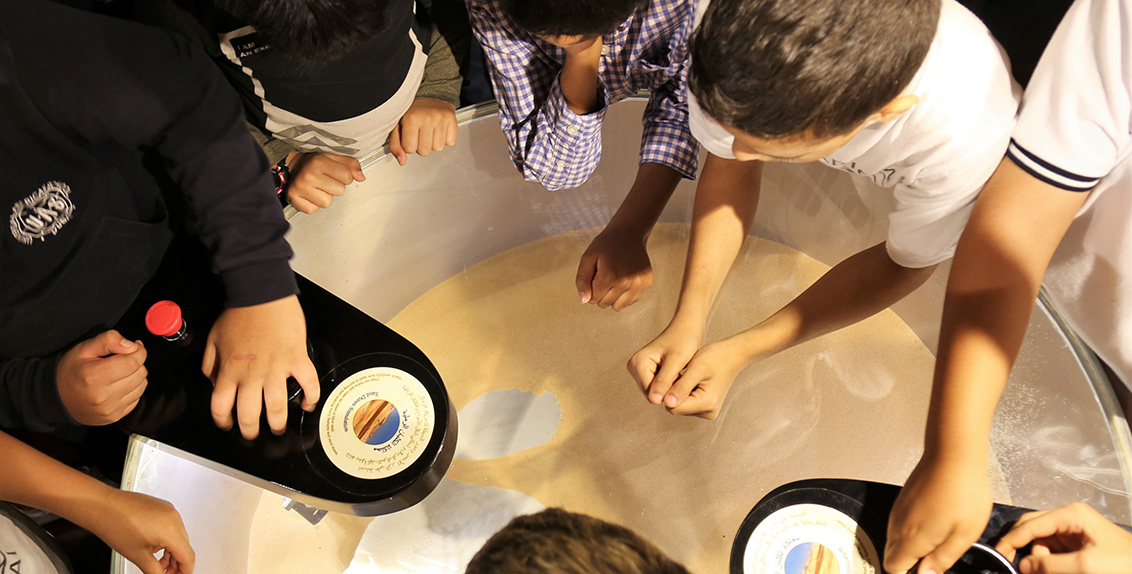Four years on, the Emirates Soil Museum has carved out a reputation for itself as a go-to place of learning about environmental protection and sustainable development in the UAE and beyond.
Some 7,000 people, including ministers, policymakers, researchers, farmers, and students from around the world have either visited the museum or participated in its programs since it was inaugurated in December 2016.
Despite the Covid-19 pandemic, the museum continued to engage its stakeholders through various online programs. As a result, it managed to attract more visitors and participants in 2020 than in 2019: 2,796 and 2,000, respectively. A total of 1,632 people took part in virtual activities while 1,164 joined in on-site tours and programs.
Throughout the year, the museum also collaborated with 32 organizations to hold and contribute to a range of online and in-person events highlighting the importance of soil and water resources for food security, sustainable agriculture and development.
It ran the first edition of its Sustainability Winter Camp in partnership with Eedama and arranged a number of corporate tree-planting events. It was also a featured partner and contributor at such events as the Ghaf Youth Majlis by the Connect with Nature; the Down to Earth by the Jameel Art Center; an online summer camp by the Ministry of Education and the Office of Food and Water Security; an online summer camp by the Hamdan Bin Rashid Al Maktoum Center for Giftedness and Creativity; an online winter camp by the Dubai Municipality; a World Soil Day event by the International Soil Reference and Information Centre and the World Soil Museum; and others.
What is more, in collaboration with the World Soil Museum and other soil museums from different countries, the Emirates Soil Museum participated in the launch of the Global Soil Museum Network on World Soil Day, which is celebrated every year on 5 December. The network brings together soil museums around the world to facilitate collaboration in different areas from running educational programs to promoting awareness about soils to establishing new soil museums.
The museum also partnered with the Water Alliance Association to support the Water Alliance Student Ambassadors in developing a children’s story book on soil biodiversity. Written, illustrated, and designed by children, it is the first children’s book co-produced by the museum.
Moreover, the museum was featured in a major study titled “A review of the world's soil museums and exhibitions”, which was co-authored by Ms. Mai Shalaby, Curator of the Emirates Soil Museum, and published in Advances in Agronomy. Conducted by an international team of soil experts, the study identified 38 soil museums specifically dedicated to soils, 34 permanent soil exhibitions, and 32 collections of soils that are accessible by appointment. It also analyzed the number of soil museums since the early 1900s, as well as information about their locations, contents, and visitors.
The Emirates Soil Museum is a unique facility in the Gulf region. It serves as a knowledge hub for everyone who is interested in soil conservation in the UAE and the region.
It is specially designed to raise awareness, particularly among youth, about the threats to soils and the significant role healthy soils play in meeting the current and future food needs worldwide.
The museum has external and internal exhibits that allow visitors to immerse themselves in the world of soils. Outside the museum, a custom-designed landscape includes a diversity of desert plants and rocks found in the UAE. And indoors, exhibits are arranged around themes such as climate change and food security. In addition to the displays, there are also two interactive simulators of sand dune formation and water infiltration in different soil types such as sand, silt, and clay. The museum also boasts a library of soil information resources and touchscreen stands for accessing soil maps of the UAE.

